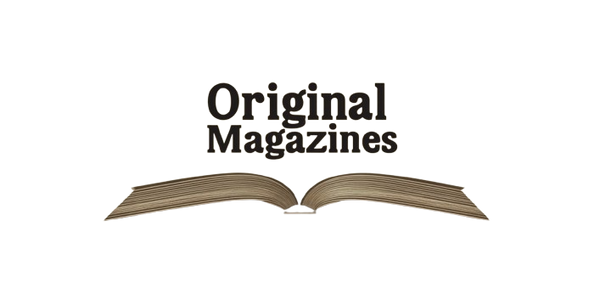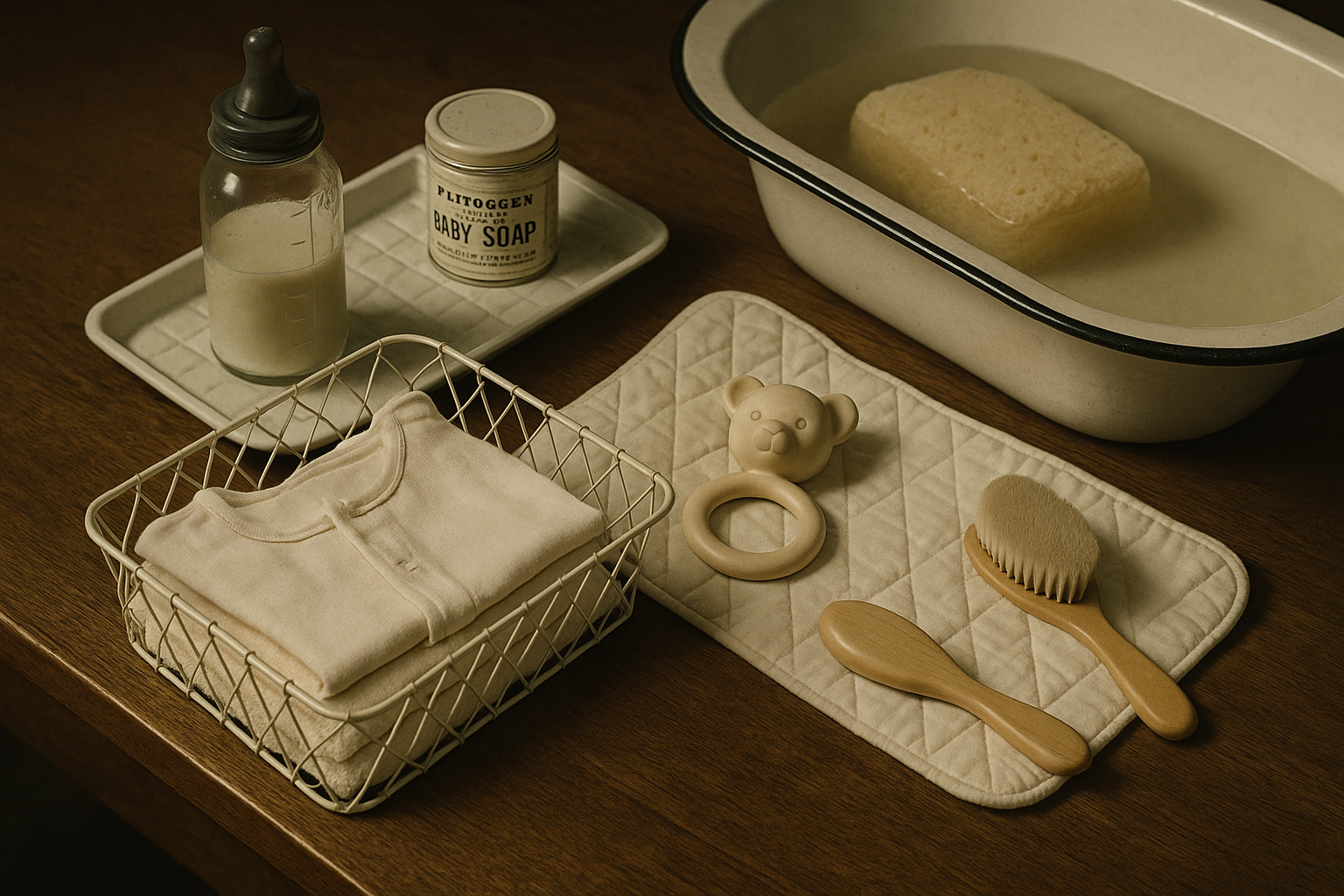A New World of Senses: How 1950 America Understood Baby’s Second Month
When families opened the April 1950 issue of Ladies’ Home Journal, they were stepping into a carefully crafted guide to modern postwar life. This was not just another magazine; it was one of the most influential publications in America, arriving in mailboxes and stacked on coffee tables across the nation. Among its many features, one series stood out: “Baby’s First Year,” a month-by-month profile of infant Dana Miller, photographed by her father, Wayne Miller, a respected documentary photographer.
In the installment titled “Baby’s Second Month: World and Welcome to It,” the Journal invited readers into the intimate daily rhythms of early infancy. Through photographs of doctor visits, home routines, and family affection, readers learned what to expect as their newborns moved beyond the fragile first month. For mid-century families, this wasn’t just advice — it was reassurance, delivered with authority and tenderness.
By 1950, the United States was deep in the baby boom era. Millions of returning veterans had settled into suburban homes, and families were growing at a rate never seen before. This cultural moment made child-rearing advice an urgent national interest.
Ladies’ Home Journal responded by producing photo essays that combined medical expertise with everyday family life. Articles like “Baby’s Second Month” did more than tell mothers what to do; they showed them in pictures. From checkups at the doctor’s office to tender moments at home, the article mirrored the postwar domestic ideal — a mother devoted to her child, a doctor as the authority figure, siblings happily engaged, and the home as the center of family life.
This was also an era when science and psychology were increasingly shaping child-rearing. Pediatricians emphasized milestones, while popular culture reassured parents that attentive, affectionate care was essential for raising secure children. In a time before the internet or even widespread television ownership, magazines like Ladies’ Home Journal were the primary bridge between medical authority and ordinary mothers.
A Cover that Captured Domestic Authority
While the April 1950 cover itself featured themes of postwar home and style, the photographic spreads inside carried equal weight. In “Baby’s Second Month,” the visual storytelling was striking. Photographs showed Dana Miller being weighed at the doctor’s office, examined with an otoscope, and carefully watched by her siblings. Another image showed Dana’s mother tenderly cradling her at home, reinforcing the emotional labor and affection expected of mothers.
Storytelling Through Images
Unlike text-heavy parenting manuals, Ladies’ Home Journal presented pediatric care as a photo-narrative. Readers could see:
-
Checkups in the doctor’s office — illustrating medical authority and trust in science.
-
Bath time routines — showing how to safely wash and comfort a baby.
-
Developmental milestones — with Dana lying on her stomach, beginning to control her head and neck muscles.
-
Sibling involvement — her older sister peering curiously over the crib, symbolizing family bonding.
Each caption gave practical advice, from ideal bath temperatures (98–100°F) to how to recognize warning signs of illness (fever, rash, convulsions, loss of appetite, drowsiness). The message was clear: parenting was both a science and an art, and Ladies’ Home Journal was the guide.
A Cultural Mirror
This article also reflected broader American culture. Doctors were shown as men, mothers as the caretakers, and children as the center of postwar prosperity. While today’s readers may note the rigid gender roles, in 1950 this imagery reassured families that they were fulfilling the ideal vision of home life.
The article emphasized several core ideas:
-
Babies at two months begin to show awareness of voices, lights, and surroundings.
-
Crying and colic were normal, but should be met with calm reassurance, rocking, and attention.
-
Fresh air and outings were encouraged, even for newborns — an 8-pound baby did not need to be housebound.
-
Regular checkups were vital, with clear signs listed for when to call the doctor.
-
Early muscle development started with the head and neck, followed by arms and legs.
-
Maternal well-being was seen as directly tied to the child’s health and happiness.
This combination of advice and imagery offered readers a roadmap through uncertainty, wrapped in the authority of medicine and the comfort of family storytelling.
For collectors, the April 1950 issue of Ladies’ Home Journal holds enduring value.
-
Historical Timing – Published during the height of the baby boom, it captures the anxieties and hopes of a generation raising children in postwar America.
-
Wayne Miller’s Photography – The images are not staged glamour shots but documentary-style photos, giving a realistic glimpse into mid-century parenthood.
-
Cultural Significance – These magazines are time capsules of advice, fashion, home design, and social ideals. They show how families understood themselves and their roles in a changing world.
-
Collectible Appeal – Parenting-themed vintage issues, especially those in photo-essay series, are highly sought after by collectors, historians, and even families looking to connect with their heritage.
Holding a copy of this issue is more than reading — it’s handling an artifact of American family history.
Unlike many magazines that disappeared with changing media landscapes, Ladies’ Home Journal left a deep cultural legacy. It was one of the first mass-circulation women’s magazines and shaped expectations about family life, fashion, health, and gender roles for nearly a century.
The “Baby’s First Year” series is especially memorable because it turned the ordinary into extraordinary. By photographing one baby’s development month by month, it created a shared parenting journey for millions of readers. Parents felt that they weren’t alone — they were part of a national conversation about raising children.
For collectors, historians, or anyone fascinated by the story of American families, Ladies’ Home Journal is an invaluable resource.
👉 Explore the full collection of original Ladies’ Home Journal Magazines available here:
OriginalMagazines.com – Ladies’ Home Journal Collection
Each issue tells its own story — from women’s fashion and beauty to literature, home advice, parenting features, and cultural commentary. Together, they create a mosaic of women’s lives and America’s history across the decades.
The April 1950 issue of Ladies’ Home Journal, with its feature on “Baby’s Second Month: World and Welcome to It,” stands as a reminder of how print media guided families through life’s most intimate and universal experiences. Its blend of heartfelt photography, practical medical advice, and cultural storytelling gave mothers reassurance and shaped mid-century ideals of home life.
Today, it survives not just as a magazine but as a living artifact of parenting history. To hold its pages is to witness how America once taught mothers to love, nurture, and guide their children — and to reflect on how much, and how little, has changed since then.

